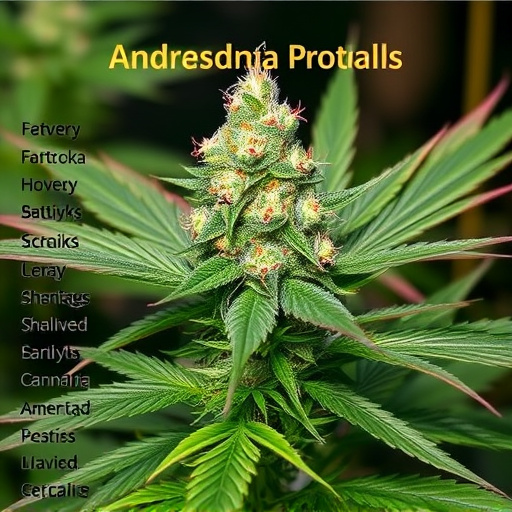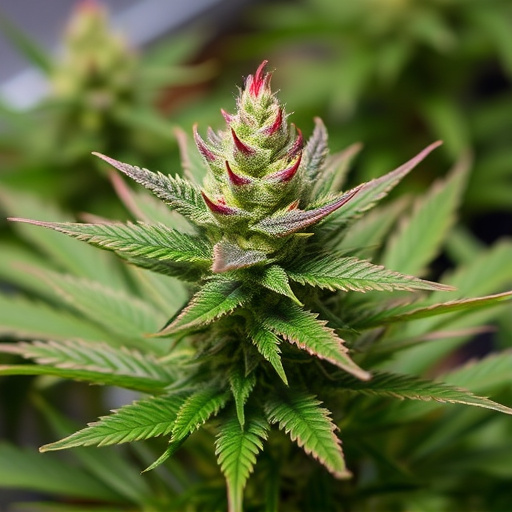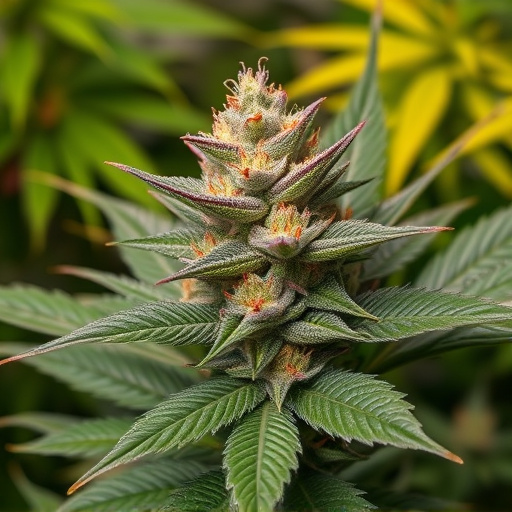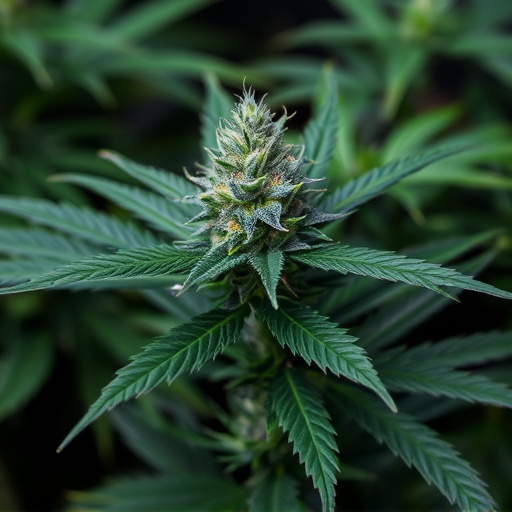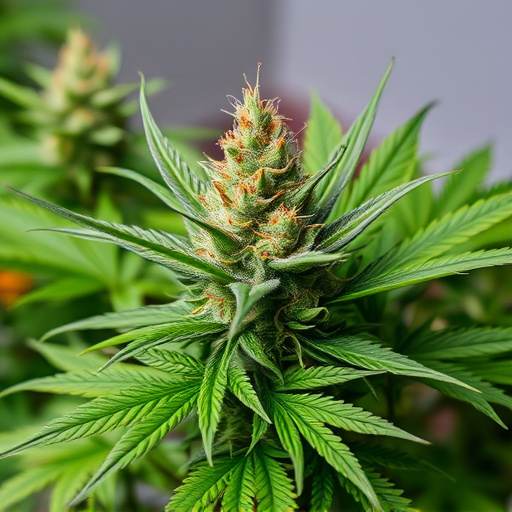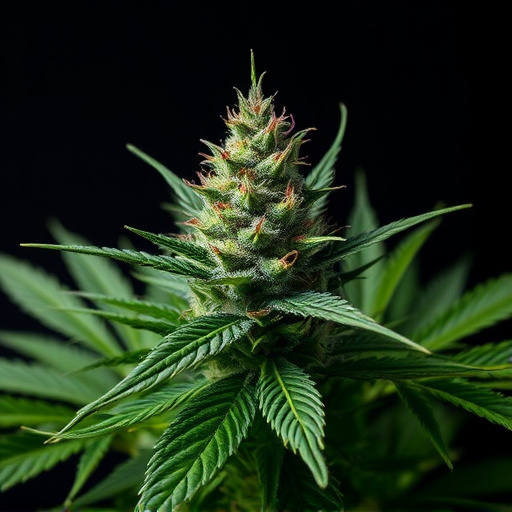Cannabis metabolism varies by strain type, body chemistry, and consumption methods, affecting detox rates. Indica strains with higher CBD offer relaxation while Sativa's high THC levels may prolong marijuana's detectability. The liver breaks down THC into 11-OH-THC with a 30-hour elimination half-life, compared to CBD's much longer 5-40 day half-life. Terpenes influence cannabinoid effects and can aid detoxification by managing withdrawal symptoms. Detoxing from cannabis involves strategic approaches like increasing water intake, regular exercise, choosing milder CBD-rich strains, and maintaining liver health through diet.
Looking to detox from cannabis? Understanding how your body metabolizes and eliminates cannabinoids is key. Different types of cannabis strains have varying levels of THC and CBD, impacting detox speed and difficulty. This article guides you through effective strategies tailored to each strain type, offering practical tips for a successful and faster detox process. Learn about the science behind cannabis elimination and empower yourself with knowledge.
- Understanding Cannabis Metabolism and Elimination
- Different Types of Cannabis Strains and Their Effects on Detox
- Effective Strategies for Cannabis Detox
Understanding Cannabis Metabolism and Elimination

Cannabis metabolism and elimination are complex processes that vary depending on several factors, including the type of cannabis strain consumed, individual body chemistry, and consumption methods. Different strains of cannabis contain varying levels of cannabinoids, such as THC (tetrahydrocannabinol) and CBD (cannabidiol), which have distinct effects on the human body. For instance, Indica strains are known for their relaxing properties due to higher CBD content, while Sativa strains may induce a more energizing effect because of their higher THC levels. Understanding how these cannabinoids are metabolized and eliminated is crucial in determining the duration they remain in your system.
The liver plays a vital role in breaking down cannabinoids into metabolites that can be excreted from the body. Enzymes in the liver convert THC into 11-hydroxy-THC (11-OH-THC) and then into 11-nor-9-carboxy-THC (THC-COOH), which is less potent and easier to eliminate. The elimination half-life of THC varies significantly between individuals but is typically around 30 hours. CBD, on the other hand, is metabolized differently and has a much longer elimination half-life, ranging from 5 to 40 days, making it more persistent in the body. Knowledge of these metabolic pathways can help individuals understand how long cannabis remains detectable in their system, especially when considering different types of cannabis strains with varying cannabinoid profiles.
Different Types of Cannabis Strains and Their Effects on Detox
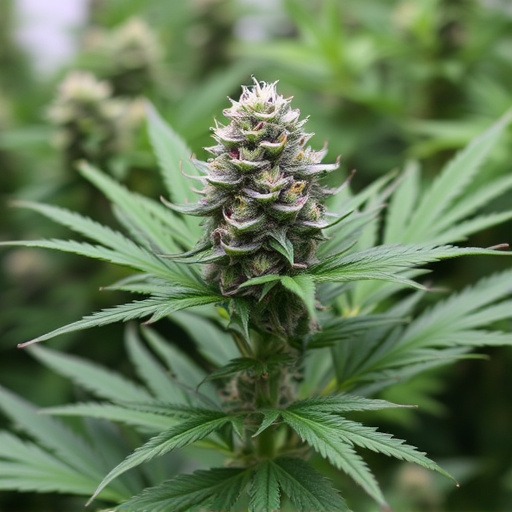
Cannabis comes in various forms, each with distinct chemical compositions and effects. Understanding the different types of cannabis strains is crucial when it comes to detoxing from marijuana use. Sativa strains, known for their uplifting and energizing properties, typically contain higher levels of THC (tetrahydrocannabinol), which can prolong its stay in your system. Indica strains, on the other hand, are sedative and relaxing, but they usually have lower THC concentrations, aiding in faster elimination from your body. Hybrid strains offer a mix of both sativa and indica effects, with varying cannabinoid profiles that impact detox rates differently.
The specific terpene profile of each strain also plays a significant role. Terpenes are aromatic compounds that not only contribute to the unique scent and flavor of cannabis but can also influence its potential effects on the body. For instance, myrcene is known for its sedative properties, which may help in mitigating withdrawal symptoms during detox, while limonene has uplifting and energizing effects, potentially making it less ideal for immediate post-use detoxification.
Effective Strategies for Cannabis Detox

Detoxing from cannabis involves more than just cutting back; it’s about adopting strategies that support your body’s natural elimination processes. Since cannabis can remain in your system for varying periods depending on factors like metabolism and consumption frequency, having a structured plan is key. Firstly, increasing water intake becomes crucial; staying hydrated aids in flushing out cannabinoids. Incorporating regular exercise into your routine isn’t just beneficial for physical health but also helps speed up the detoxification process by promoting circulation and sweeping out toxins.
When considering cannabis detox methods, it’s important to understand that different types of strains have varying levels of cannabinoids, like THC and CBD. Heavy users might want to focus on milder strains with higher CBD content during their detox period, as CBD is believed to help alleviate withdrawal symptoms. Additionally, supporting your liver function through a balanced diet rich in vitamins and minerals can enhance your body’s ability to metabolize and excrete cannabis residues more efficiently.
Detoxing from cannabis is a process that requires understanding both its metabolism in the body and the varying effects of different strain types. Each individual’s experience with cannabis can differ greatly due to factors like tolerance, frequency of use, and specific strain characteristics. When aiming to detox, employing effective strategies tailored to your needs becomes essential. By combining knowledge about cannabis strains and efficient elimination methods, you can successfully navigate the detoxification process.






